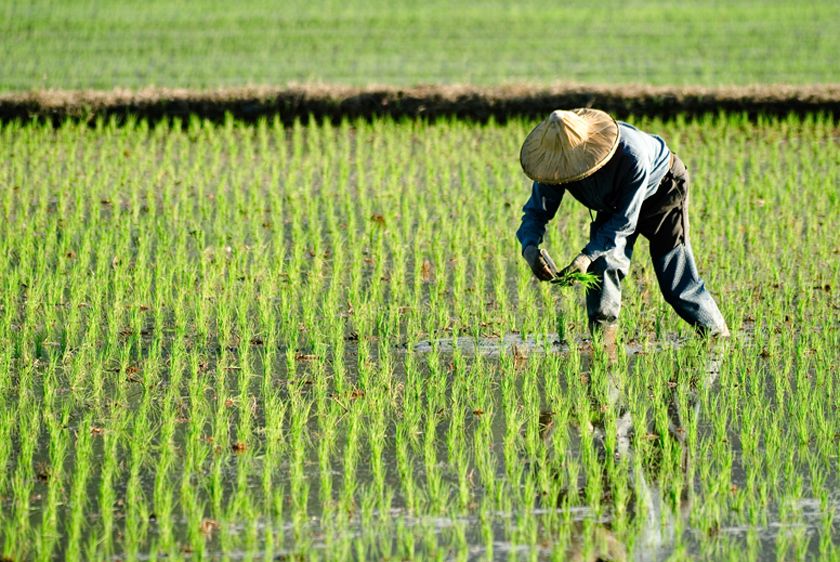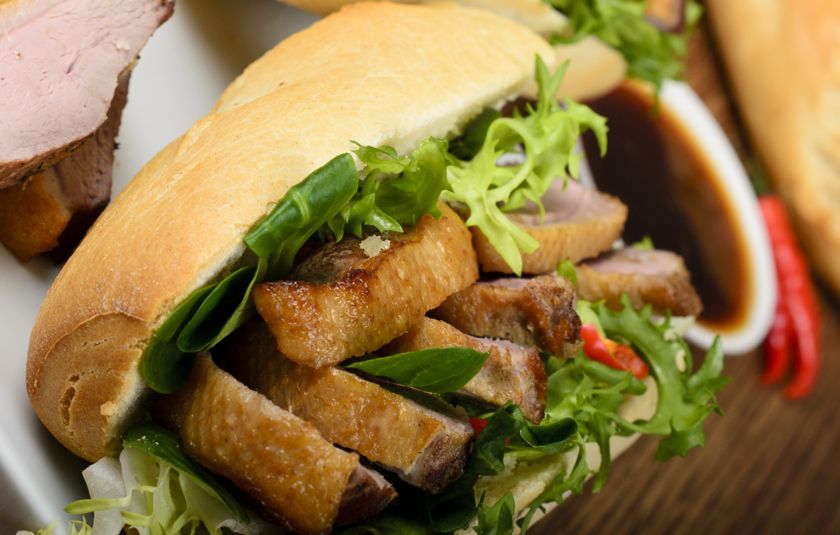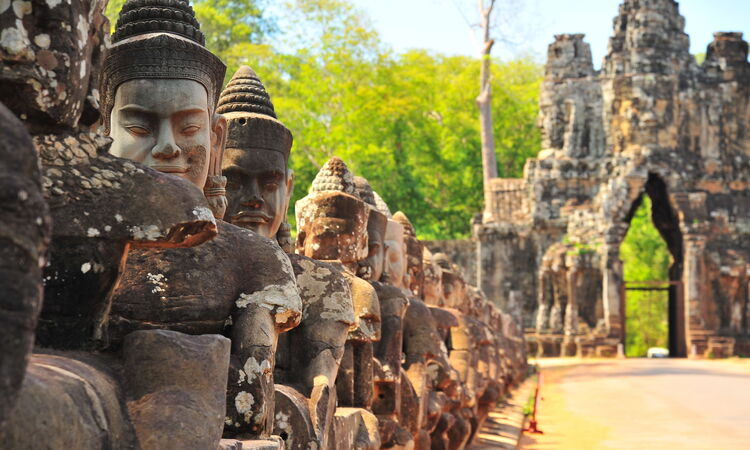Article content
24 January 2013 by Alex Stewart
Four flavours - sweet, sour, salty and spicy - set your taste buds tingling. From Myanmar to Singapore, the Philippines to Aceh, Southeast Asian cuisine is defined by the balance of this sensational quartet.
rice & noodles | pho | bite-size diversions | banh mi
It's amazing what four simple flavours can do. In Laos or northeastern Thailand, this symmetry of sweet, sour, salty and spicy flavours might be obtained by combining the sweetness of sugar, the tartness of lime juice, the salinity of paa daek (a thick fish paste) and a few fresh chillies. In northern Vietnam, the salty flavour might come from soy sauce, which might be countered by a few dried chillies and a strategic splash of vinegar. In the Philippines, a unique sweet-spicy marriage might come from a combination of palm sugar and black pepper. Regardless of the country or the medium, the goal is the same - a favourable balance of sweet, sour, salty and spicy.
The countries of Southeast Asia share other culinary characteristics, including a strong reliance on fish - both as a protein and, in the form of fish sauce, a seasoning. Nearly every cuisine has also taken advantage of the region's fresh herbs, whether they're added as a fresh garnish, ground into pastes and dips, or added to soups or steamed dishes. Foreign influences, from the Chinese wok to the egg yolk-based sweets introduced to Thailand by early Portuguese explorers, have also influenced Southeast Asian cuisine in a profound and irrevocable way. And the cuisines of every country in Southeast Asia are linked by rice - without a doubt, the grain of choice for the entire region.
These links are strong, and their origins similar, but the standout feature of the cuisines of Southeast Asia is not their similarities, but rather their differences. The food of Southeast Asia is anything but a single entity, and from a handful of shared traits has sprung a legion of disparate cuisines that rival just about any region in the world in their diversity and full-flavouredness.
Rice & Noodles

Have you eaten rice today?
Rice is so central to Southeast Asian food culture that the most common term for 'eat' in nearly every regional language translates as 'consume rice'. This is not entirely surprising, given that the grain is thought to have been cultivated in the area for as many as 7000 years. Today, Thailand is Southeast Asia's (and the world's) greatest rice exporter, a title it sometimes exchanges with Vietnam.
The rice of choice for the vast majority of Southeast Asians is the long-grained variety that is prepared by being boiled directly in water. Just to be different, the inhabitants of Laos and northeastern Thailand prefer sticky rice, short stocky grains that are soaked in water before being steamed in bamboo baskets.
Although strands of rice- or wheat-flour-based dough are probably Chinese in origin, there is hardly a corner of Southeast Asia where you won't be able to find noodles. And given the local fixation on rice, it's hardly surprising that the most popular form of noodles is made from rice flour mixed with water to form a paste, which is then steamed to make wide, flat sheets. The sheets are folded and sliced into various widths, and are sold both fresh and dried.
Another type of rice noodle, particularly popular in mainland Southeast Asia, is produced by pushing a type of rice-flour paste through a sieve into boiling water, much the way Italian-style pasta is made.
The Chinese introduced the region to the ubiquitous round noodles made from wheat flour and egg; they're yellowish in colour and are sold only in fresh bundles. Also popular are the clear noodles made from mung-bean starch and water.
|
WHERE TO EAT: Myaung Mya Daw Cho, 158 51st St, Yangon, Myanmar If you're in Yangon (Rangoon), head to Myaung Mya Daw Cho, where a bowl of noodles will set you back less than a dollar. |
Pho

Pho is Vietnam in a bowl. It's soul food. It's comfort food. It's beef noodle soup and so much more.
You can have pho everywhere in Vietnam, but it is almost a cult in Hanoi. A bowl of pho begins its Mayfly life the day before you eat it. A slow simmering of beef shin bones, oxtails and scraps in a deep pot creates a rich, clear consommé. The alchemist adds their herbs, their spices, their family secrets. Chief among them, and you will always know the aroma of pho by them, are star anise, ginger and cinnamon.
From a distance, its come-hither smell urges you to reach the pho shop. The vendor deftly cuts rice sheets into noodles and slices meat into near-translucent thinness. 'Customer,' he asks, 'what kind of meat do want?'
He immerses a sieve of noodles into hot water for a moment, lifts them out, drains them, and pours them into your bowl. With a florist's eye, he arranges on top a bouquet of white onion slices, tiny yellow shavings of ginger, perhaps something green. And then, red raw beef, in slices about the size of the heel of your hand. He lifts the lid of his stockpot and steam billows out, enveloping you in a gossamer cloud. You know you're about to taste poetry. Ladles of the broth fill your bowl, its heat penetrating the meat, cooking it to perfect tenderness in seconds.
From the garnish tray, add a squeeze of lime. Some bean sprouts. A dash of chilli sauce and garlic sauce or fish sauce. Lastly, sprinkle with coriander, mint or basil leaves. Or all of them. What you have before you is a bowl of yin and yang. It is hearty yet delicate; complex and straightforward; filling but not bloating; spicy and comfortably bland. It is pho.
____________________________________________________________________
Bite-size Diversions
Explore how pungent spices and aromatics such as galangal and lemongrass create distinctive dishes in different countries throughout South East Asia.
Leave your fried-rice comfort zone and discover samlor, the vibrant, herb-laden soups that are the highlight of this culinary dark horse. Eaten with rice and a fish dish, it’s the closest you’ll come to the quintessential Cambodian meal.
Indulge in the legendary Lao culinary triumvirate: tam maak hung (papaya salad), laap (a minced meat ‘salad’) and sticky rice. (Throwing a Beerlao into the mix certainly wouldn’t hurt either.)
Think only Americans know barbecue? Challenge the notion with Bali’s babi guling, spit-roast whole pig seasoned with chilli, turmeric, garlic and ginger. Coupled with coconut rice and spicy sides, it just might be the best barbecue in the world.
Experience Malaysia in a bite: nasi lemak, the country’s unofficial ‘national dish’. It combines rice cooked in coconut and served with cucumber, tiny crunchy fish, peanuts, hard-boiled egg and a spicy sambal (a chilli-based condiment).
Get stuffed in Penang – dare we say it, Southeast Asia’s best food destination – where tasty regional cuisines and some of Southeast Asia’s best produce (hello durians!) meet in a more-ish marriage.
It’s not the most attractive dish in the world, and it’s often mixed by the naked hand of the vendor, but a taste is all that’s needed to become pleasantly addicted to lephet thoke, a salad made from fermented tea leaves.
Pluck up the courage to try balut, a boiled duck egg containing a partially developed embryo, sometimes with tiny feathers.
It may be a tiny island, but mealtime in Singapore means choosing between Southern Indian, regional Chinese, Malaysian, Thai and even European cuisines. Simply put, when it comes to food, Singaporeans are spoilt for choice.
Why let a plump tummy be the only evidence of your trip to Thailand? Recreate those meals yourself after a visit to one of the country’s numerous and excellent-value cooking schools.
You may never look at a bowl of Rice Krispies the same way again after starting the day with a steaming bowl of pho, one of the most legendary noodle soups in the world (see above).
____________________________________________________________________
Banh Mi

The Vietnamese baguette sandwich known as banh mi is an early example of Southeast Asian fusion food. The dish's primary ingredients - baguette, mayonnaise and a type of peppery pork liver pâté - show an obvious link with the French, who introduced these foods to the Vietnamese under their tenure as colonial rulers during the early 20th century.
Other ingredients, including xa xiu, the barbecued pork known in English as char siu, have Chinese origins, while the sandwich's herbs and seasonings are distinctively Southeast Asian. The sandwich is now popular around the world, and in 2011 the word banh mi was added to the Oxford English Dictionary.
Banh mi begins with a light baguette that has been grilled over coals. After a smear of mayonnaise and a dollop of pâté, the crispy shell is then filled with a mixture of meat (usually more pork), crunchy pickled vegetables and fresh herbs. Banh mi is then typically seasoned with a few drops of soy sauce and a spicy chilli condiment.
Banh itself is a word that embraces all sorts of baked goods, including crêpes. Banh can be sweet or savoury, wrapped in leaves and steamed or grilled. Each region of Vietnam has its own banh; in the north banh gio is made from rice flour and pork wrapped in banana leaf. The only common denominator is that banh is always a handheld snack.
|
Where to Eat: Phuong, near the corner of Bach Đang and Nguyen Duy Hi eu, Hoi An, Vietnam They're prepared on a wheeled cart parked on a nondescript street corner in Hoi An, but the banh mi sold from this vendor are considered among the best in Vietnam. If the combination of crispy bread and a meaty, spicy filling aren't enough, revel in the fact that a sandwich at Phuong will set you back a whopping 15,000 dong (about US$0.75). |
This guest article was contributed by leading publisher Lonely Planet, from their sumptuous Food Lover's Guide to the World, which presents a lifetime of eating experiences that will lead you from one end of the globe to the other.
Take your taste buds on a tour around the world and then give us a call once you've wheted your appetite for your next culinary adventure.
.







